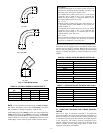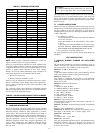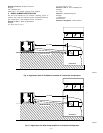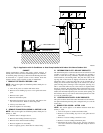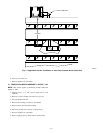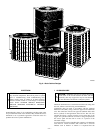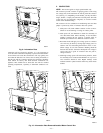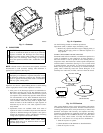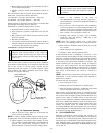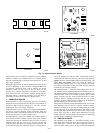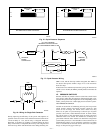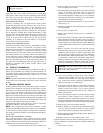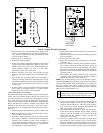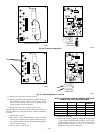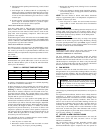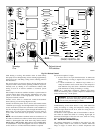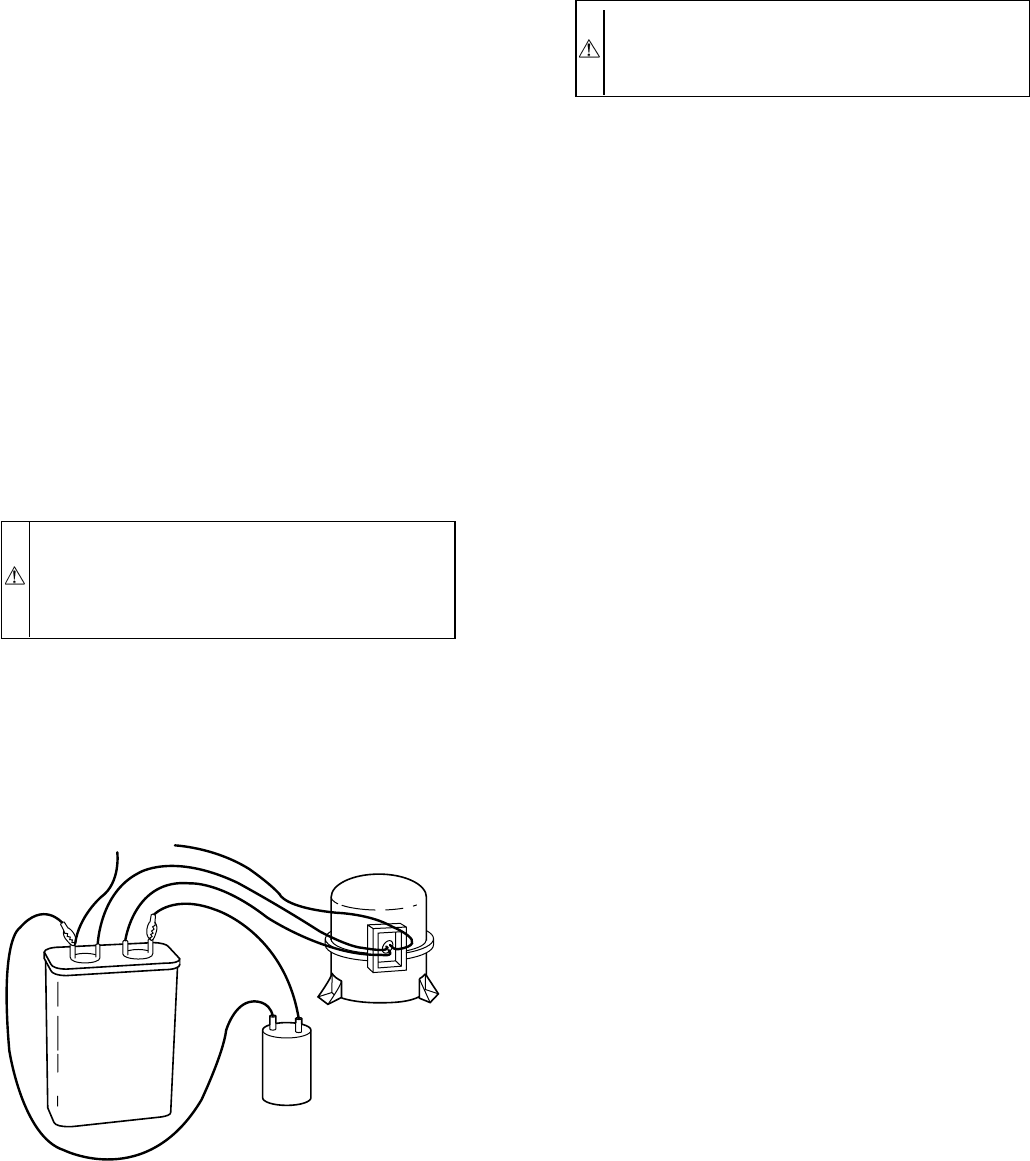
4. Remove PTC from unit. Wait at least 10 minutes for PTC to
cool to ambient temperature.
5. Measure resistance of PTC with ohmmeter as shown in
Fig.13.
The cold resistance (RT) of any PTC device should be approxi-
mately 100 – 180 percent of device ohm rating.
12.5–ohm PTC = 12.5–22.5 ohm resistance — beige color
25–ohm PTC = 25–45 ohm resistance — blue color
20–ohm PTC = 20–36 ohm resistance — blue color
If PTC resistance is appreciably less than rating or more than 200
percent higher than rating, device is defective.
If thermistor is good and compressor does not start:
1. Disconnect thermistor from starting circuit.
2. Give compressor a temporary capacitance boost (see next
section).
3. Run compressor for 10 minutes, shut off, and allow system
pressure to equalize.
4. Reconnect start thermistor.
5. Try restarting compressor without boost capacitor. If after 2
attempts compressor does not start, remove thermistor. Add
an accessory start-capacitor relay package.
TEMPORARY CAPACITANCE BOOST
WARNING: Do not under any circumstances attach a
temporary boost capacitor directly to the compressor
terminals. Serious personal injury can result. Exercise
extreme caution with this procedure when high-voltage
power is on.
There are times when a temporary capacitance boost is needed to
get compressor started. (See Fig. 14.) If compressor motor does not
start, it may be due to low-line voltage, improper pressure
equalization, weak run capacitor, or a seized compressor. Check
each possibility and attempt capacitance boost before adding
auxiliary start capacitor and relay.
1. Turn off all power to unit. There may be more than one
power source to condensing unit.
NOTE: If a PTC is already installed, remove it from the system
by pulling PTC wires from H and C terminals on run capacitor.
2. Check compressor for ground or open windings. If wind-
ing’s resistance is within manufacturer’s recommendations,
proceed. (See Reciprocating Compressor Section II-
Electrical Failures for proper compressor-winding check.)
CAUTION: Do not check winding at compressor termi-
nals with pressure in the system. Check resistance by
removing wires attached at the compressor contactor and
run capacitor.
3. Obtain a start capacitor in the range of
150–180µF[@0330] volts rating. Connect 8–gauge wires
with insulated clips or terminals to the H and C terminals of
the run capacitor.
4. Turn power on to unit. If compressor starts, immediately
remove start-capacitor wires from H and C terminals of run
capacitor, using a pair of insulated, needle-nose pliers. DO
NOT leave start capacitor attached to run capacitor for more
than 3 seconds, even if compressor doesn’t start.
5. Discharge start capacitor by using a pair of insulated,
needle-nose pliers and shorting a 15,000 ohm, 2 watt
resistor across terminals.
NOTE: Some start capacitors already have a bleed resistor
attached. If so, it will discharge itself over a short period of time.
6. Run compressor 10 minutes. Stop and allow unit to sit idle
for 5 minutes.
7. Check system pressure equalization.
8. Attempt to restart without capacitance boost.
If PTC thermistor device is inadequate as start device, a start
capacitor and relay may be added to system to ensure positive start.
Capacitor is wired in parallel with run capacitor through normally
closed set of contacts on a device called start relay. The relay coil
is wired across start and common terminals of compressor. The
added capacitance gets the compressor started. As compressor
comes up to speed, voltage across start and common terminals
increases to a value high enough to cause start relay to energize.
This opens normally closed contacts and removes start capacitor
from circuit. In actual practice, this occurs in a fraction of a
second.
NOTE: If bleed resistor is wired across start capacitor, it must be
disconnected to avoid erroneous readings when ohmmeter is
applied across capacitor.
To check start relay and capacitor:
1. Turn off all power to unit.
2. Discharge start and run capacitors as outlined earlier.
3. Most start capacitors will have a 15,000 ohm, 2 watt bleed
resistor. Disconnect these devices from system.
Start capacitor can be inspected visually. It is designed for short
duration or intermittent duty. If left in circuit for prolonged period,
start capacitor blows through a specially designed bleed hole. If it
appears blown, check for welded contacts in start relay. Start
capacitor can be checked by ohmmeter method discussed earlier.
Start relay is checked with ohmmeter. Check for continuity across
coil of relay. You should encounter a high resistance. Since relay
contacts are normally closed, you should read low resistance
across them. Both PTC device and capacitor-relay start system are
standard equipment on some of these units. They are also available
as accessories and may be field-installed.
IV. CYCLE PROTECTOR
Solid-state cycle-protector device protects unit compressor by
preventing short cycling. After a system shutdown, cycle protector
provides fora5±2-minute delay before compressor restarts. On
normal start-up, a 5-minute delay occurs before thermostat closes.
After thermostat closes, cycle protector device provides a 3-sec
delay on HN67PA025, HN67ZA003, and HN67ZA008. (See Fig.
15, 16, and 17.)
Fig. 14—Capacitance Boosting
A88349
START (BOOST)
CAPACITOR
COMP. RUN
CAPACITOR
220-V FROM UNIT
CONTACTOR
—15—



